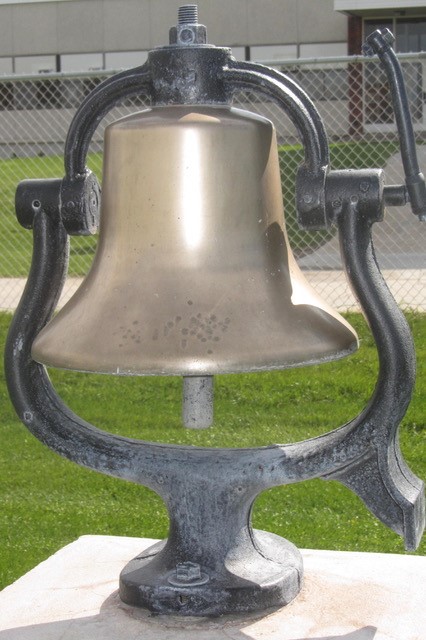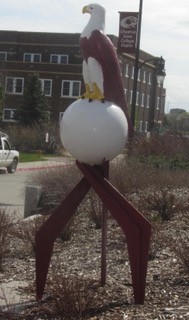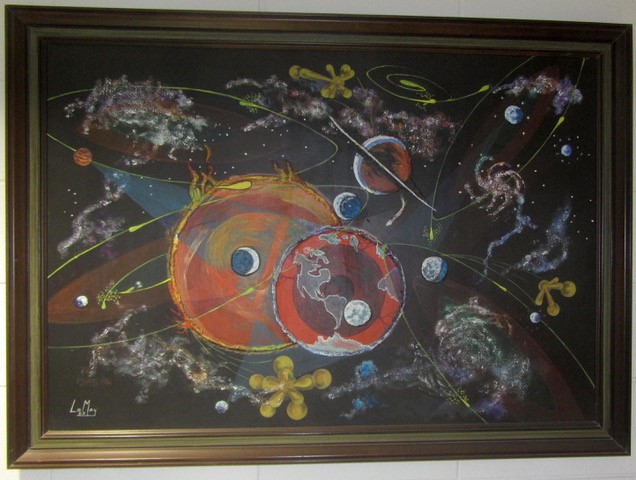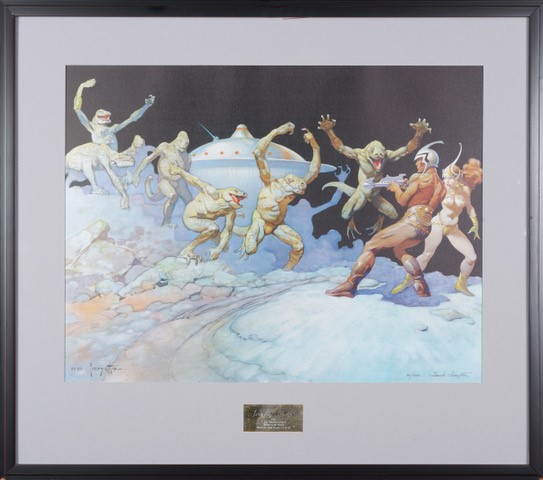Diverse art collection an educational and visual resource for CSC
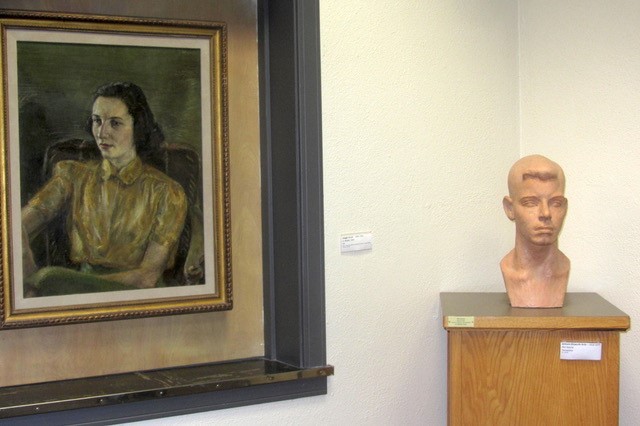
CHADRON – Although gallery spaces in Memorial Hall at Chadron State College are the places most associated with the display of art on campus, visitors, students and faculty can view examples of the more than 160 pieces in the college collection in several other buildings and on the campus grounds, according to Sarah Polak, whose job as director of the Mari Sandoz High Plains Heritage Center includes acting as curator for the collection.
The collection began years ago with pieces created by students in the CSC art department, but has grown over the years largely through the generosity of alumni.
“Most of the pieces were donated by either former students, faculty or staff,” Polak said.
Among the more famous artists represented in the CSC collection are Fredrick Remington and Grant Wood. Two bronze pieces by Remington, “Mountain Man” and “Cowboy,” were received as donations in 2015 and are displayed in offices in Sparks Hall. A lithograph by Grant Wood, famous for his iconic “American Gothic” painting, was also donated in 2015. It is not currently on display, but like the other work it serves as a resource for the art department faculty.
The college also has what may be the largest and most diverse collection anywhere of works by noted African-American artist William Artis, who taught at CSC in the 1950s and 60s. Clay busts and a mosaic by Artis can be seen in Memorial Hall and the collection includes examples of his pottery and drawings.
Many other pieces from the CSC collection also adorn walls in M-Hall, including the piece that Polak said is most popular among students. The print by Frank Franzetta, titled “Leaping Lizards,” is a comic-book style outer space fantasy piece showing two human figures under attack by a band of lizard-like creatures. The piece is currently displayed in the south stairwell of Memorial Hall. Polak said she frequently gets comments from students that it should be placed in a more prominent location.
Art works are also on display in the library, where several new pieces of metal sculpture were recently installed in the entry vestibule, and in the Sandoz Center, the Burkhiser building and the Math and Science building.
Unlike some institutions, Chadron State does not have a fund for purchasing art, Polak said, but Nebraska’s one percent for art requirement, which mandates allocating a portion of the cost of major construction projects for art work, has provided money for some acquisitions. “The Muses,” a bronze sculpture by Lander, Wyoming, artist David Alan Clark that was placed on the east end of Old Admin as part of CSC’s centennial celebration in 2011 was paid for with one percent funds, Polak said.
To meet the art requirement for construction of the Rangeland Complex, an artist was recently commissioned to create a suspended, mixed media sculpture, which will be installed in the fall of 2018, Polak said. Money set aside for art as a result of the Chicoine Center construction will be combined with the art funds from the new stadium project.
“(The combined funds) will be used to do something really special on campus,” she said.
Not all of the CSC’s art is hung on walls, or even in buildings. The three eagle sculptures on campus (one at each end of the football field, and one by the Nelson Physical Activity Center on the corner of 12th and Main) are part of the college collection. The Blue Key Bell at the east end of the football field, a 1954 gift from the CSC Blue Key chapter honoring Blue Key members who served in the military, is also a piece of outdoor sculptural art, Polak said.
A committee that includes Polak and faculty members from various departments takes responsibility for deciding what art works to purchase and to accept from donors. “When looking at accepting a work for the collection, we look at connection to Chadron State, Chadron and/or the region,” said Polak. “We look at the quality of work, and finally, we look at how this piece can be used by our faculty in the classroom.”
The college doesn’t have enough locations for display of all of its art collection, and some pieces remain in storage in Memorial Hall, but space there is limited and work to find another suitable place for the works is underway, according to Polak. If someone is interested in seeing a particular piece or work by a particular artist and can’t find it on display, they can contact the Sandoz Center. Digital images of all the pieces in the collection are available at the Center, but scheduling access to physical pieces in storage takes about three business days, Polak said.
Having a variety of art on campus enhances learning for CSC students, according to Polak.
“Our students live in a world where visual communication is more important every day. Having a quality art collection is important for our students to learn how to interpret the visual messages they see every day,” she said.
The broader community also benefits from the CSC art collection, Polak said.
“The art collection not only beautifies our campus and serves as a resource for our faculty and students, it also serves the community,” she said. “Any member of the public can come and view these works for free any time these buildings are open. Without the college collection the works by artists like Grant Wood, Fredrick Remington, R.C. Gorman and others would not be available to the public.”
Category: Art, Campus News

